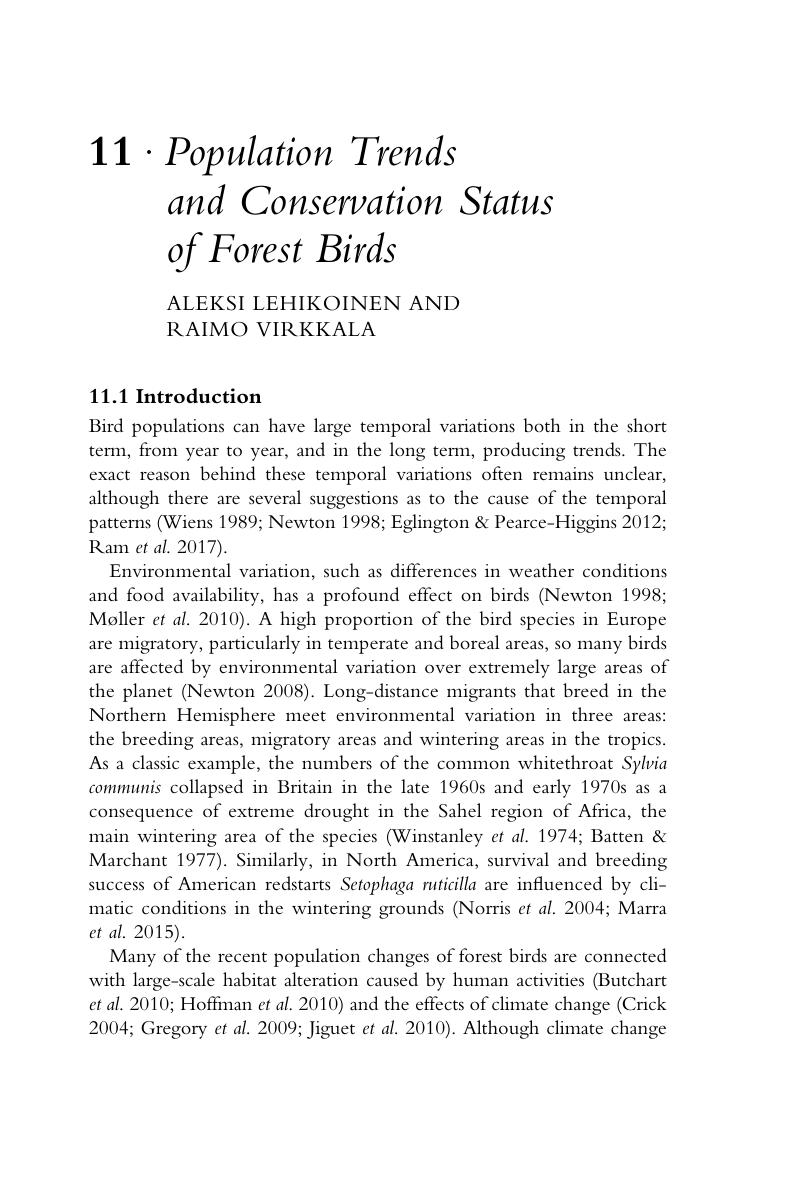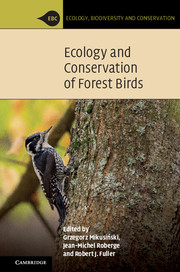Book contents
- Ecology and Conservation of Forest Birds
- Ecology, Biodiversity and Conservation
- Ecology and Conservation of Forest Birds
- Copyright page
- Contents
- Acknowledgements
- Contributors
- 1 Introduction
- Part I Forest Birds and Their Adaptations
- Part II European Forests and Their Bird Communities
- Part III Conservation and Management
- 11 Population Trends and Conservation Status of Forest Birds
- 12 Hunting and Other Forms of Exploitation and Persecution of Forest Birds
- 13 Conservation Strategies and Habitat Management for European Forest Birds
- 14 Future Forests: Avian Implications and Research Priorities
- Species Index
- Subject Index
- References
11 - Population Trends and Conservation Status of Forest Birds
from Part III - Conservation and Management
Published online by Cambridge University Press: 15 March 2018
- Ecology and Conservation of Forest Birds
- Ecology, Biodiversity and Conservation
- Ecology and Conservation of Forest Birds
- Copyright page
- Contents
- Acknowledgements
- Contributors
- 1 Introduction
- Part I Forest Birds and Their Adaptations
- Part II European Forests and Their Bird Communities
- Part III Conservation and Management
- 11 Population Trends and Conservation Status of Forest Birds
- 12 Hunting and Other Forms of Exploitation and Persecution of Forest Birds
- 13 Conservation Strategies and Habitat Management for European Forest Birds
- 14 Future Forests: Avian Implications and Research Priorities
- Species Index
- Subject Index
- References
Summary

- Type
- Chapter
- Information
- Ecology and Conservation of Forest Birds , pp. 389 - 426Publisher: Cambridge University PressPrint publication year: 2018
References
- 5
- Cited by



